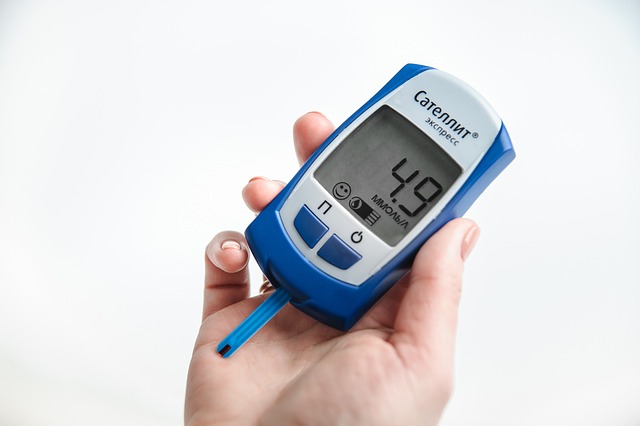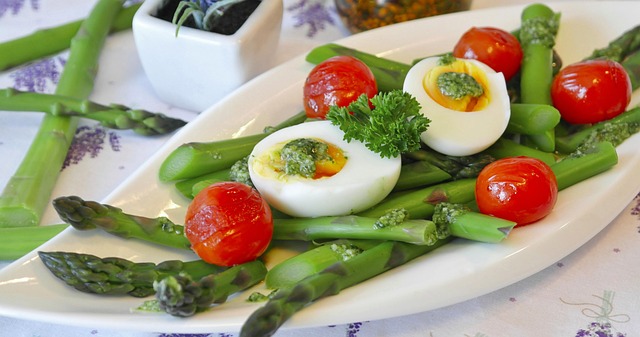Protein and diabetes: what you need to know
Protein is a focus for many people who are trying to lose weight and lower diabetes risk. That certainly makes sense, since protein helps delay hunger and stabilizes blood sugar. However, the protein story is not as simple as “more is better,” and not all protein sources are the same.
How much protein should you have, and which foods should you choose for getting your protein? This is what you should know so you can make the best decisions for your health.
How Much Protein Is Enough?
The basic protein need for the average adult is 0.8 grams per kilogram of body weight per day. That translates into 56 grams of protein per day for someone who weighs 154 lb. Someone on a high-protein diet might aim for around 25% of calories from protein. If you are following a 1,600-calorie-per-day diet for weight loss, that would translate into 100 grams of protein per day.
These amounts may sound like a lot, but consider that the average American has 84 grams of protein per day. You can get over 100 grams by having:
- Breakfast: scrambled eggs with vegetables and cheese.
- Snack: cottage cheese and fruit.
- Lunch: green salad with grilled chicken and nuts.
- Snack: vegetables and Greek yogurt dip.
- Dinner: fish, broccoli, and a sweet potato.
It is not that hard to get enough protein if you eat it consistently throughout the day. Just aim to include a serving of a high-protein food at most meals and snacks. You can try for fish, eggs, poultry, reduced-fat dairy products, beans, nuts, or tofu. Vegetables and whole grains also add to your protein totals.
While protein can be good, and more can be better, too much protein can be harmful. The general cut-off for safety is 2 grams per kilogram of body weight per day. That means the maximum safe amount is 140 grams per day if you weigh 154 lb., and 160 grams if you weigh 176 lb. More than that may lead to liver, kidney, and bone problems over time. Excessive amounts of protein have even been linked to higher body weights.
Seafood, Poultry, and Eggs: Lean and Carb-Free
Fish, poultry, such as chicken and turkey, and eggs are lean protein sources. Not surprisingly, poultry is the top source protein in the U.S. diet, accounting for over 14% of total protein intake. Seafood comes in seventh, making up only 5% of Americans’ protein intake, and eggs are ninth, making up 3%. Shellfish and poultry have about 20 grams of protein per ounce, while eggs have about 6 grams each.
These foods are considered “lean” protein sources because they are fairly low in calories and carbohydrates. They can be good choices for weight loss. A serving of skinless poultry or non-fatty can have about 100 to 130 calories and an egg has about 80. Fish, some shellfish, poultry, and eggs have no carbohydrates, while a few types of shellfish, including mussels, oysters, and squid, have a few grams of carbs.
Fatty fish have more calories, but are rich in omega-3 fatty acids. These are heart-health and may lower diabetes risk and risk for weight gain. Salmon, tuna, mackerel, herring, anchovies, and trout are a few examples of fatty fish to choose.
Protein Power of Plants
Plant-based proteins may not have quite as much protein per serving as meat, poultry, and fish, but they are still proteins worth choosing. They have beneficial nutrients such as dietary fiber and potassium. Examples include soy and soy products, such as tofu, beans, peas, lentils, nuts, peanuts, and seeds. Grains, especially whole grain products, also have a bit of protein.
Despite their carb counts – an ounce of almonds has 6 grams of carbs and a half-cup serving of beans has about 20 grams of carbohydrates – plant-based proteins are linked to lower body weight and a lower risk for diabetes. One study found that compared to meat eaters, people following a vegan or plant-based diet had half the risk of diabetes.
Some people are concerned about plant-based proteins because most of them do not provide all of the essential amino acids that you need. However, that need not be a serious concern if you eat a balanced diet. It is true that only a few plant-derived proteins, such as soy and quinoa, are complete with each of the essential amino acids, but it is easy enough to get them all due to the principle of complementary proteins. You can get each of the essential amino acids by combining any two types of plant-based proteins from the following groups:
- Legumes
- Nuts and seeds
- Grains
- Vegetables
By combining proteins, you can get a complete protein with all the essential amino acids. These are some examples.
- Peanut butter or almond butter sandwich on whole-grain bread.
- Carrots or celery with peanut butter.
- Carrots or celery with hummus.
- Green beans with almond slices.
- Beans and brown rice.
- Green salad with garbanzo beans.
- Lentil stew with cashews.
- Veggie burger patty made with corn, oats, and other vegetables.
Dairy Products – Protein Plus Calcium
Dairy products have somehow gained a poor reputation, and that may not be fair. They have been linked to lower risk for cardiovascular disease and lower body weights, and are a central part of the DASH diet to lower blood pressure. Now, there is data to suggest that people who eat reduced-fat dairy products have a lower risk for diabetes.
Red and Processed Meat: False Friends?
Beef comes in a close second behind chicken, making up 14% of total American protein consumption. Pork, ham, and bacon come sixth. That does not make them healthy, though. They also contribute a good amount of calories and saturated fat, and have been linked to higher body weight and quite a few health problems, including certain cancers, heart disease, and diabetes risk.
Lean red meat is better than fatty, and fresh meats appear far better than processed. Do your best to limit fatty processed meats such as pepperoni, salami, bacon, and sausage, and when choosing lean deli meats, look for all-natural, low-sodium versions. Choose lean steaks and pork chops when you can, and trim off any visible fat before cooking red meat.
Better Protein in the Best Package
You can make the best of your protein by choosing healthier sources and eating them with other nutritious foods.
What you eat with your protein source can be as important for your weight and blood sugar control as the protein source is. You are best off keeping the general diet guidelines in mind when you plan your meals and snacks with protein. That may mean having vegetables, healthy fats, and whole grains when you can, rather than having your protein with refined starches, fried potatoes, or butter or mayo.
You might consider…
- Stir fry with tofu, chicken, or fish and tons of vegetables
- Whole-grain pasta and vegetables with your chicken or shrimp
- Apples with peanut butter
- Baked sweet potatoes or carrot sticks with your veggie burger
Help with Protein, Please!
Are you getting enough protein? How do you choose the right ones? What other foods can be part of a healthy weight loss diet for lowering type 2 diabetes risk?
Help is here! Lark DPP can help you get the right amount and right types of protein as part of your healthy prediabetes diet. Keep logging your meals and snacks to get tips on choosing better protein sources and fitting them into your nutritious meal plan. Weight loss and healthy eating can be simple and delicious!











.webp)






